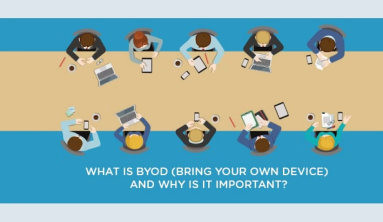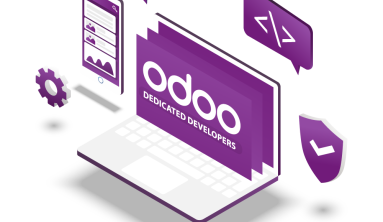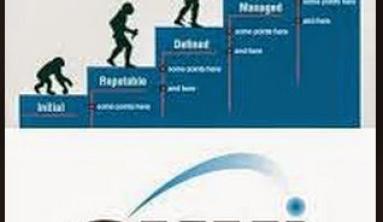Software development outsourcing is becoming more and more popular and prevalent for tech savvy companies. Before you adopt this model you need to know different models of outsourcing, their use cases, benefits, and how to be successful with it. In this article, we present different outsourcing models and their impact on your business.
Primary software development outsourcing models
There are some basics you need to pay attention to before you outsource your project. In this guide we would be focusing on the client and provider relationship model. This is primarily because healthy relationships drive business success. When the relationship is right, you don't have to worry about distance. Here are the three main relationship based models:
- Staff Augmentation
- Managed Team
- Project-based
Staff augmentation model
In the staff augmentation model you own your project from start to end. The client takes the most of the responsibility. You're hiring tech talents from an outsourcing company To strengthen the team responsible for the development projects.
Managed team model
In this model responsibility and ownership are shared by the client and the outsourcing provider determining on which responsibilities belong to whom.
Project-based model
The outsourcing provider takes the most of the responsibility and own the projects from start to end. He or She completes your development projects according to your specifications.
Table of Contents
- Staff augmentation model for software development outsourcing?
- Dedicated team model for software development outsourcing
- Project-based model for software development outsourcing
- Choosing the software development outsourcing model for your business
- Conclusion
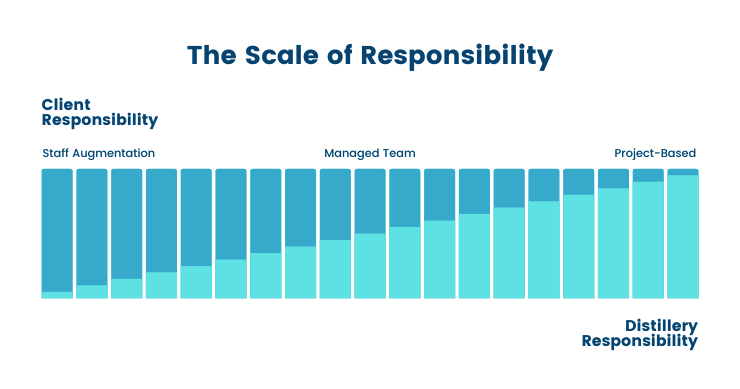
Staff augmentation model for software development outsourcing?
What is staff augmentation?
It's a model of outsourcing strategy where you hire extra tech talents to upscale your team based on your needs. They are employed based on the talents required and can work with a client for a short or lengthy period of time. Is a flexible structure in IT outsourcing. You decide on which ground you need specialists and which of them fit into your requirements.
In the IT sector, staff augmentation firms could provide programmers, QA engineers, designers, marketing specialists, and system administrators.
What are the advantages of staff augmentation?
-
Significant cost efficiencies - for businesses who looking for cost-efficiency and quality the staff augmentation could be good solution because of:
- lower staffing and HR costs
- lower operational costs
- lower development costs
-
Zero recruitment risk - your outsourcing provider hiring for you tech talents appropriate to project.
-
Speed to innovation - tech talents + the right expertise + different point of view = speed to innovation
- Complete flexibility - you can hire as many developers as you need to reach your goals.
- Quality resources and skillsets - You could select from a global talent pool of remote software developers. It means you can collaborate with professionals from any part of the globe.
- Full control over project development - You have full control over development development process and experts who are supporting your project.
When is staff augmentation best?
-
You need reinforce your in-house team
While you have in-house software developers. For some new projects you will need current expertise. In this case you should strengthen your IT team.
-
You are short on deadline
The recruitment process takes a lot of time from job advertisement to onboarding. Staff augmentation model provides you the quick way to hiring extra developers independently of type of contract.
-
You need specific skills
You need to quickly expand your team by bringing in skilled engineers or technicians.
-
As a bridge for hire
Short-term employment may turn into longer employee relations.
Dedicated team model for software development outsourcing
What is a dedicated software development team?
This software development outsourcing model gives you access to a team of highly skilled developers. In this model, you and your outsourcing partner share ownership of, and responsibility for, project direction and deliverables. It's a cross between staff augmentation and a completely outsourced solution.
As with staff augmentation, your managed team is dedicated entirely to you and your project. Your managed team operates independently of your in-house team, with an outsourced Project Manager overseeing daily operations and workflows. While the managed team operates autonomously, your outsourced Project Manager reports to and meets with your in-house Project Manager / Product Owner on a regular basis. Typically, these teams are cross-functional. Whatever the requirements of your project, a competent outsourcing provider will be able to customize the structure of your team to achieve the best results.
The managed team model is unusual in that both you and your outsourced partner share risk and responsibility for the final outputs.
From the start, you and the managed team will agree on the scope, roles, deliverables (e.g., deliverables), timeframes, and service-level agreements. Your in-house Project Manager / Product Owner is active throughout the process, assisting in the direction and decision-making of the product. This involves maintaining consistent communication with your outsourced Project Manager.
What are the advantages of a dedicated software development team?
-
More control over the process of development.
A managed team model gives you greater control over the development process than a standard project-based outsourcing model because you have shared responsibility of the deliverables.
-
Less time commitment between you and your in-house team.
The responsibility is taken by your Product Owner or Product Manager, she or he have to control time commitment, agreed-upon communication and duties. It relieves you of managing your project on a day-to-day basis.
-
Reduced ramp-up efforts and costs.
Your managed staff does not require any time to get up to speed. They've probably already worked together on similar projects and are familiar with one other's working methods.
-
Improved communication.
Communication and Coordination are essential skills of any outsourced managed team.
-
Reduced risk due to proven experience.
You'll choose your managed team outsourcing provider in part based on their previous expertise with similar projects. Their previous achievements improve the chances of your project succeeding.
When is dedicated team best?
Many projects benefit from the dedicated team model's are flexibility and scalability. You shouldn't think of it as a one-size-fits-all solution, though. Dedicated teams are the most effective in the following situations:
- Long-term projects on broad scale and unpredictable changes. When dealing with a one-time tech project, hiring an in-house team is not justified.
- When your team is already working on other development projects and can't focus on one more project.
- When your in-house team lacks the necessary experience and/or expertise to complete the project.
- When you still want to be a decision-maker and development your products vision, but most activities can be done without you
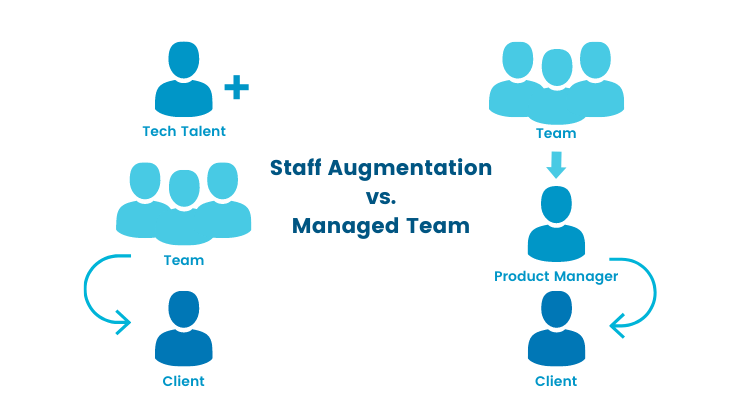
Project-based model for software development outsourcing
What is project-based outsourcing?
Project-based outsourcing is when your development partner oversees and manages the whole process based on your specifications.
The most conventional and hands-off of the three outsourcing models is project-based outsourcing. You give over the requirements to your outsourcing partner.
Your outsourcing partner will handle the whole development process, delivering the finished product to your requirements and on schedule.
Even if you have the least amount of control with project-based outsourcing, your in-house Project Manager/Product Owner will keep in touch with your outsourced partner. The frequency of these contacts is determined by your project and your outsourcing partner.
What are the advantages of project-based outsourcing?
This model provides many of the benefits mentioned in the previous cases.
Increased clarity on timeline and outcomes. Access to top talent, significant cost efficiencies, increased flexibility and scalability, speed to innovation, and no recruitment risk.
-
Clear timeline and outcomes.
Before you start project-based outsourcing engagement, be clear about defining timelines and deliverables.
-
Minimal time commitment for you and your in-house team.
The least control over the development process, it can be a significant advantage for some companies. You may have a smaller development project in mind, but you don't want to take your team time away from more mission-critical projects. You could let the project sit in your backlog with “low priority” status, or you could outsource it with a project-based approach. Choosing the latter keeps your staff focused on your top priorities.
-
Responsibility for project success lies outside your company.
Although you are responsible for documenting the initial requirements and specifications. Your outsourcing provider is in charge of execution and delivery.
Your contract and/or SOWs hold them to their obligations.
When is project-based outsourcing best?
-
When you have a project that is not your main product.
Project-based outsourcing is fit for businesses of all sizes, although it works best for initiatives that are not core products.
-
When you have limited in-house development capabilities.
Because the outsourcing provider owns the responsibility and process, a project-based approach is suitable for firms with limited engineering/IT expertise. Businesses of all sizes may create unique software products by outsourcing development to an expert software outsourcing firm.
-
Simple projects have pre-determined needs that are unlikely to change.
A project-based outsourcing company can complete these tasks without your input.
-
When you need a product created quickly and efficiently - without the burden of management. Again, project-based outsourcing works best for customers that know exactly what they want. You may successfully hand off your project and relieve yourself of the strain of management.
Choosing the software development outsourcing model for your business
Comparison of the software development outsourcing models
| STAFF AUGMENTATION | MANAGED TEAM | PROJECT-BASED | |
|---|---|---|---|
| Scope | Not set | Estimated | Predefined |
| Timeline | Predefined | Estimated | Predefined |
| Control | High | Medium | Low |
| Flexibility | High | Medium | Low |
| Team Scalability | High | Medium to high | Low |
| Responsibility for Execution & Deliverables | Client | Shared | Outsourcing provider |
| Client Involvement | High | Medium | Low |
| Client Technical Expertise/Leadership | Required | Recommended | Optional |
| Communication with Outsourced Team | Daily | Frequent | Occasional |
| Overlap with In-House Team | High | Some | None |
| Product Management | Client | Shared | Client |
| High Level Management | Client | Shared | Outsourcing provider |
| Task Management | Client | Outsourcing Provider | Outsourcing Provider |
| Project Management | Client | Outsourcing Provider | Outsourcing Provider |
| Operations Supervision | Client | Outsourcing Provider | Outsourcing Provider |
| Workflow Development | Client | Outsourcing Provider | Outsourcing Provider |
Choose an outsourcing path, ask yourself these questions…
Many aspects must be considered when adopting a software outsourcing model, but three stand out:
-
Flexibility required
-
How much in-house expertise you have
-
How much time your in-house Project Manager / Product Owner can dedicate to the project
Before you decide which model to choose, tell yourself a few questions:
-
What are your main business goals or needs ?
Begin by identifying the main problem. Different problems are fit for different models.
-
How much flexibility do you require, and in what areas?
Outsourcing models provide different scope of flexibility in each area ( ex.: scalability, budgeting, access to expertise, timing).
-
Do you have in-house expertise in the area covered by the project?
If you do, staff augmentation or a managed team may be the right choice. If you don’t, project-based outsourcing may be a better fit.
-
How much time do you have to devote to the outsourcing relationship?
Project-based takes the least time, managed teams a medium amount and the most attention needs staff augmentation.
-
How much control do you want to retain?
Staff augmentation may be ideal for complete control (management and responsibility). Consider a managed team for strong decision-making control without daily management. In addition to ensuring that the outsourced workforce meets your expectations, consider project-based outsourcing.
-
What is the project’s priority level?
For a high-priority project, consider a managed team or staff augmentation approach. A managed team may be a good choice for your lower-priority project.
Conclusion
Different problems require different solutions and different software outsourcing models. So you make sure to know what kind of problem you have before looking for a solution. If you're new to outsourcing, staff augmentation is a good and easy start. It gives you a feel of the outsourcing world. As your needs increase and your relationship with your outsourcing partner grows, you can try other models of outsourcing.
Via softkraft

